Petra has been amazing so far, and the Treasury is even more impressive in person even though I have seen countless pictures of this famous ancient monument prior to the trip. But James and I know there’s more than just this magnificent structure – believed to be the mausoleum of King Aretas IV – in Petra, so we follow the pathway through the Street of Façades toward the city’s massive Roman theater, situated right after a series of burial places of the Nabateans, carved out of red sandstone with Assyrian crow-steps decorating the entrance of each and every one of them. To my right, perched high above the hill is a particularly imposing tomb which was built in the first century AD. It was dedicated to Uneishu, the minister of Queen Shaquilat, wife of Aretas IV and mother of Rabbel II – Petra’s last king during whose childhood the queen reigned for six years.
Petra’s golden age of monument-building in fact occurred when Aretas IV was the king, under whom the Nabatean civilization was at its peak. After walking past the large theater, James and I arrive at the beginning of Petra’s urban center, a plain upon which the city’s most important temples were constructed. But before we go any further, a row of edifices to our right steals our attention.
A series of highly ornate structures, all carved out of the rock face of Jabal al-Khubtha – one of the many jabals (mountains in Arabic) in Petra – shine brightly under the sun. Their reddish hue highlights the architectural elements – columns, pediment and other decorative details – of each monument, creating a stark contrast to the rugged landscape around them. These are the Royal Tombs, a collection of mausoleums built in different styles that are a testament to the cosmopolitan nature of the Nabatean people. We walk closer to the first one to the right. Called the Urn Tomb, after the acroterion (an ornament placed on a flat pedestal and mounted at the apex or corner of the pediment of a building in the Greek classical style) which resembles an urn, it was built on a substructure with multiple arches, making this particular tomb stand the tallest among the others.
We climb toward the entrance of the Urn Tomb and find ourselves at a courtyard. On our left-hand side is a portico adorned with Doric columns, while on the right-hand side is a souvenir stall attended by a middle-aged Bedouin man that occupies what is now a columnless niche. In front of us is the main structure’s façade. Although its bas-reliefs have been badly eroded, its columns and other decorative elements still exude a sense of grandeur. Once we walk through the entrance way, however, we find an austere large chamber with a few small niches. Despite the lack of ornamentation, the unplastered walls actually look stunningly beautiful, thanks to the natural patterns of the stone.
A more exquisite example of this polychromatic veining can be seen on a smaller tomb to the left of the Urn Tomb. Known as the Silk Tomb, this structure displays bands of color on its façade, from pink to salmon, white, blue, ochre and saffron yellow. This spectrum gives the otherwise modest tomb its ‘silky’ appearance. Adjacent to the Silk Tomb is another massive structure called the Corinthian Tomb, a name given by 19th-century Europeans due to its Nabatean horn capitals which were mistakenly identified as those of the Corinthian order. These very explorers were also the ones who labelled this tomb “a bad imitation” of the Treasury, although if one looks closely today, the two certainly have their own distinctive features. Directly next to the Corinthian Tomb is another large and equally-eroded mausoleum called the Palace Tomb, a name attributed to its resemblance to large Greek palaces.
All the four tombs bear no inscriptions which could suggest for whom they were built. However, it is generally accepted that they were all constructed in the first century AD, a period of time when the Nabateans were ruled by Aretas IV, followed by his direct successor Malchus II. A little further down in the valley, away from the Royal Tombs, is a lonely tomb which is also the only such structure in Petra that can be dated with relative accuracy. An inscription carved on its lower entablature mentions that the son of Sextius Florentinus – a legate of Emperor Hadrian and Proprietor of the Province of Arabia between 126 and 129/130 AD – dedicated this tomb as the resting place of his father. It is further confirmed by other sources that the Roman Governor did spend the last years of his life in Petra, probably out of his love for the city.
However, Petra is not all tombs and mortuary edifices. Following the main road that connects the Treasury and the Roman theater westward, we arrive at a colonnaded street that was the urban center of the Nabatean capital. Along this Decumanus Maximus (the main east-west road) – which runs parallel to a now-dried watercourse for almost 300 meters – all sorts of buildings were constructed, from the city’s main temples to markets and baths. Most of them are now in ruins, although in the case of the Temple of the Winged Lion you can get an idea of how it once might have looked. Situated on a small hill on the northern side of the decumanus, what remains of the structure of this place of worship – which was named after the decorations found on some of its capitals – are its foundations. Two thousand years ago, however, when seen from the colonnaded street below, the temple must have been quite a sight. Today, visitors can look through a transparent display panel at the decumanus which superimposes an image of the temple’s reconstructed original appearance on what’s left of it.
Directly across it lies another, even bigger sanctuary that is currently the largest freestanding building that has been excavated in the ancient city. Called the Great Temple, it consists of a propylaeum (monumental gateway), a Lower and an Upper Temenos (sacred enclosures), both connected by stairways. The Nabatean-style capitals and architectural elements of this temple suggest that it was built in the first century AD during the peak of the Nabatean construction boom. We explore the empty corners of this impressive structure, enter one chamber after another, and at one point are separated from each other, before finally meeting again at a small theater at the heart of the temple compound. Probably this was how priests reached this sanctum in the past; they might have entered the temple from different entrance ways, but eventually gathered at the most sacred part of the whole complex. We walk back to the Lower Temenos, and marvel at the large round columns – some of them collapsed due to past earthquakes – of the porticoes from which we can see a steady stream of tourists below. Many seem oblivious to the existence of this building where we’re standing.
We go down the propylaeum, and join other visitors walking toward the Temenos Gate which marks the very end of the colonnaded street and served as the gate to a consecrated, open-air space where ceremonies to worship the deities were once held behind its long-lost big wooden doors. The gate also suffered from heavy damage due to earthquakes that rattled this ancient city, and today some of its decorative elements are kept safe in the Petra Museum.
Walking past the imposing gate, we are greeted by another monument with the towering Al Habis rock as its dramatic backdrop. Known as the Qasr al-Bint (short for the Qasr al-Bint Fir’aun, or the “Palace of Pharaoh’s Daughter”), after local Bedouin folklore about the origin of the building, this temple might have been constructed in the early first century AD on top of the remains of an older structure. Dedicated to the pre-Islamic Arab deities of Dushara/Dusares (often associated with Zeus) and Al-Uzza (a local equivalent of Aphrodite), the Qasr al-Bint is unique in Petra for the fact that it is among the very few structures in the ancient city that withstood multiple earthquakes that razed other buildings around it. This is believed to have been attributed to the use of wooden string courses around its structure that helped absorb the energy from the ground vibration. These, and other wooden parts of the temple, have been identified as Lebanese Cedar from the same species of ancient trees that we saw in the snowy mountains of Lebanon months earlier.
Restoration work is still undergoing at Qasr al-Bint, however, so we have to keep walking until we reach a crossroads. One of the pathways that branch out from here will lead us to a site where another monumental structure is supposedly located at the end of the trail. Years before I even planned to go to Jordan, I had learned about the Monastery (Ad Deir), one of the most iconic landmarks of Petra. The blog posts I read about it all mention that it takes a little more effort to visit this site as opposed to the easy-to-reach Treasury, which is the single structure that is included in every itinerary, from that of rushed-around tour groups to those planned by the most seasoned travelers. A few months before our departure to Jordan, an Indonesian travel blogger shared her experience in Petra and how her guide told her to hike up to the Monastery. From the sound of her posts, I had the impression that going to this place would be quite a challenge.
James and I begin walking down the path toward the Monastery, cut through rugged rocks and hills that have been carved by the elements for eons. The terrain underneath our feet soon changes from sand and gravel to steps made of slabs of stone. From here, the trail keeps going up and after a while it starts to feel that we’re climbing an endless flight of steps. Fortunately, everywhere I look the landscape is always majestic, and every now and then small stalls selling water and souvenirs pop up, crucial for those who don’t bring enough water while hiking in the scorching desert sun.
We keep climbing further and further into the depths of the rocky massif, and on a sunny day like this it’s easy to quickly feel exhausted. But luckily, just half an hour since we started the ascent, we arrive at the final turn where a handful of other tourists who had started the hike before us stand in the shadows. Their eyes are fixated at something tall at the back of the mountain, and that’s how I find out we’re finally there. We take a few more steps and look to our right-hand side. There it is. The Monastery stands as it has for two thousand years, shaded by the imposing rock into which it was carved.
At first glance, one might get the impression that the Monastery looks rather similar to the Treasury, though it is even larger. However, the two are in fact radically different. While the Treasury was built during the reign of Aretas IV, with apparent Greek and Roman influences on its façade, the Monastery was constructed by Rabbel II who ascended the throne 30 years after the death of the great builder-king. Despite the kingdom’s continuing prosperity, Rabbel II decided to move his capital from Petra to Bosra (in present-day southern Syria) amid the Roman troops’ campaigns to conquer lands in Syria, Judea and Egypt. Probably to show his kingdom’s defiance against foreign influences and to show outsiders than the Nabateans were still capable of creating monuments on a grand scale, he commissioned this majestic building in the most difficult of all places. Dedicated to Obodas I, king of the Nabatean kingdom from 96 BC to 85 BC who was later venerated as a god due to his successes in defeating the Greeks and the Hasmoneans (rulers of an independent kingdom of Israel), the Monastery was constructed without incorporating the usual Greek or Roman architectural elements.
However, in 106 AD Petra finally succumbed to the Romans following the death of Rabbel II. Emperor Trajan’s troops marched into the Nabatean city and soon after Petra was incorporated into the Roman province of Arabia. Petra continued to flourish under the Romans, although the rise of other regional centers of trade, including Jerash and Palmyra, gradually diminished Petra’s significance. Centuries later as Christianity became the official religion of the Roman Empire, the city witnessed a proliferation of churches, occupying both new buildings and some Nabatean-era structures which were converted into Christian places of worship, including the Monastery and the Urn Tomb.
After spending four and a half hours sitting at a shaded, open-air snack bar marveling at the magnificent structure before our eyes, playing with the local felines, and exploring nearby rocky hills, it’s time for us to leave. On the way down, James keeps giving encouragement to tourists who seem to be posing one of these questions in their heads: “are we there yet?”, “how much longer do I have to suffer?”, and “is this the final turn?”
Heading back to the urban center of Petra, I can’t help but feel humbled by the scale of this Nabatean wonder. Its tombs and temples are true masterpieces of the ancient world, and the landscape upon which all these were built is both daunting and awe-inspiring. The relatively malleable nature of sandstone found in abundance here made construction for the Nabateans probably a little less laborious compared to their contemporaries around the world. But exactly because of this, one day all those fine carvings and marvelous columns that have drawn Petra admiration from all its visitors will be forever gone. The wind, the water, the sun, and the seismic activities in this region have shaped and will always reshape the landscape, which means there will eventually be a time when not a trace of Petra will remain. Luckily, that day is not likely to come anytime soon.

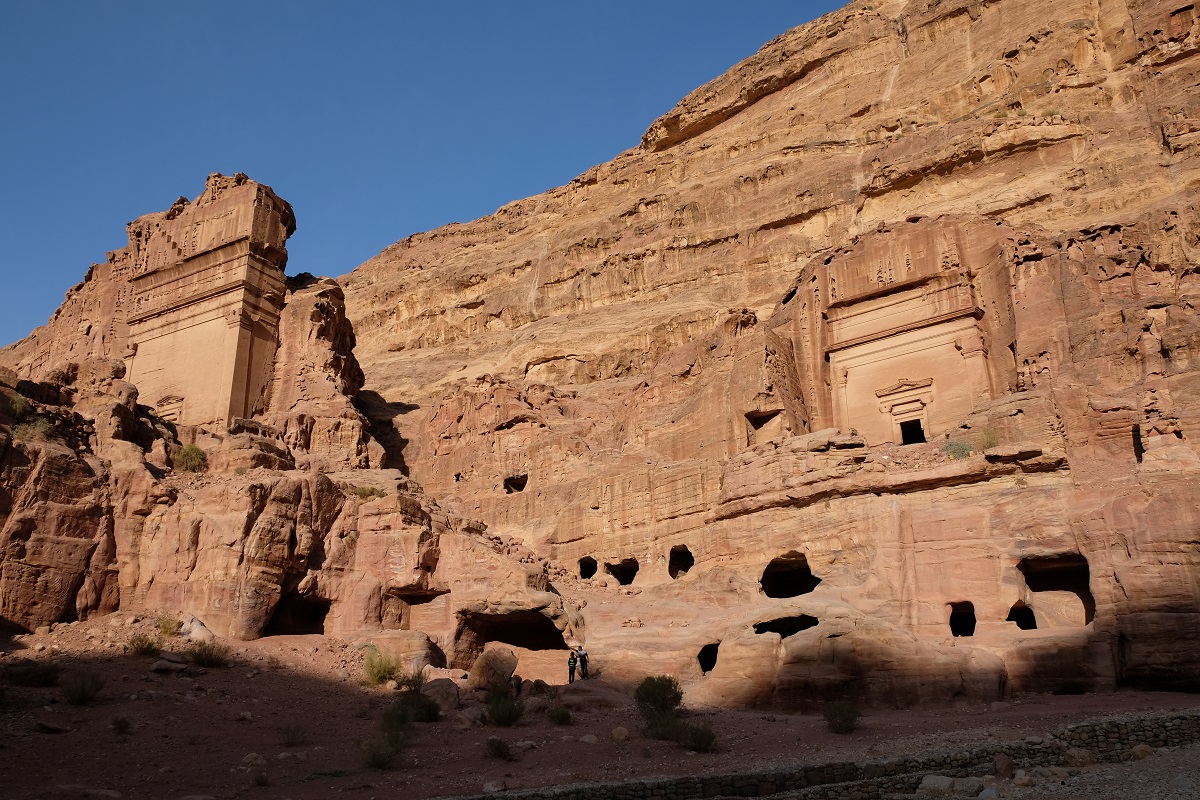

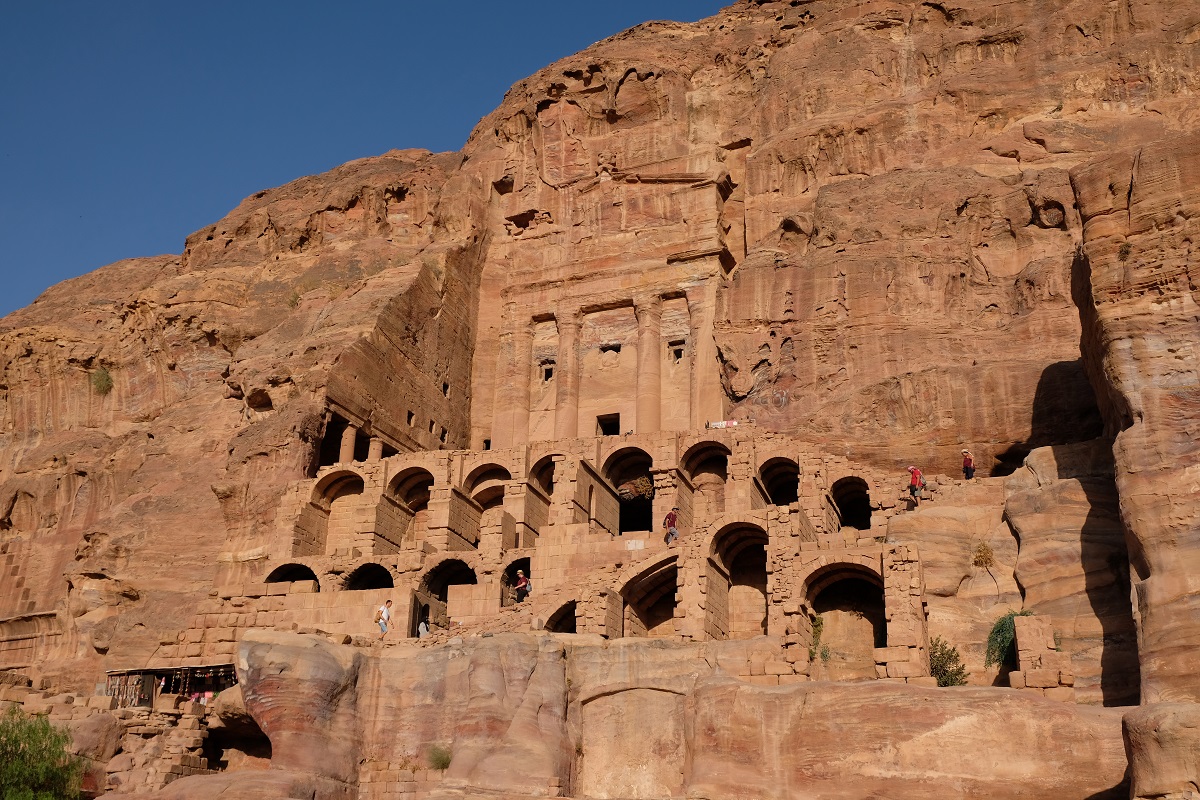
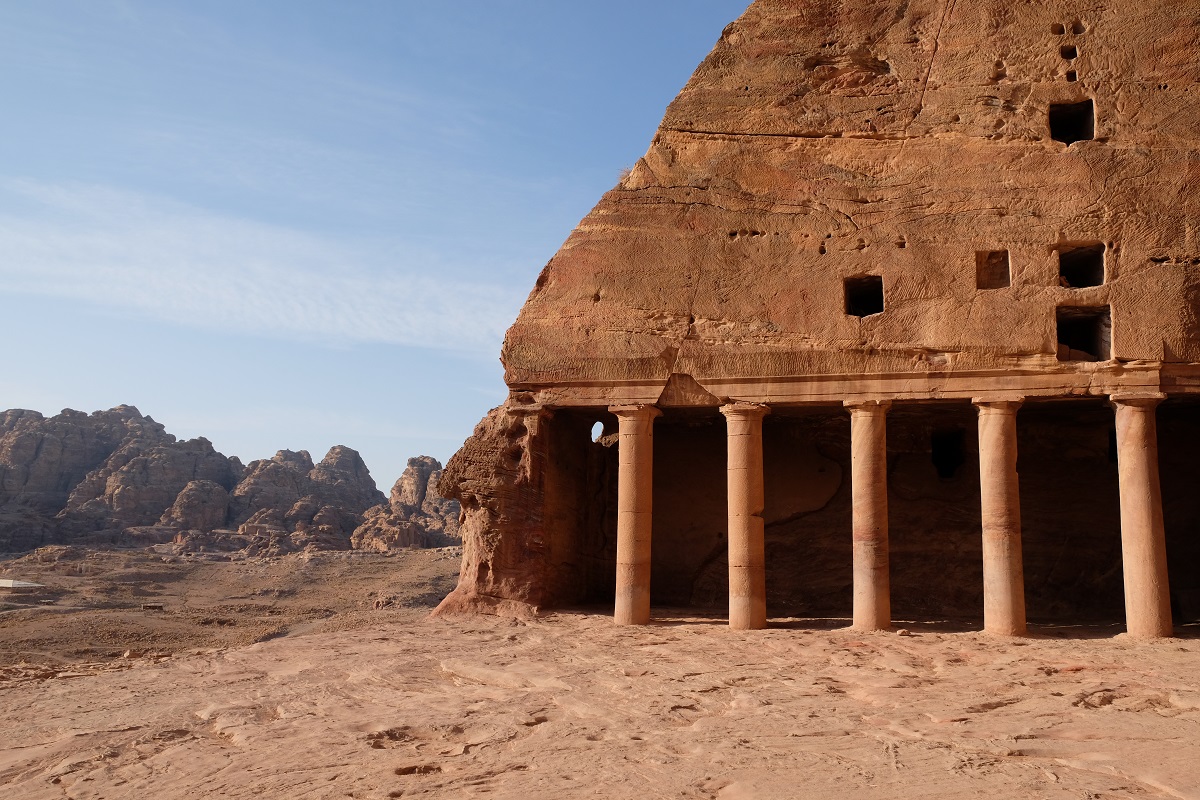


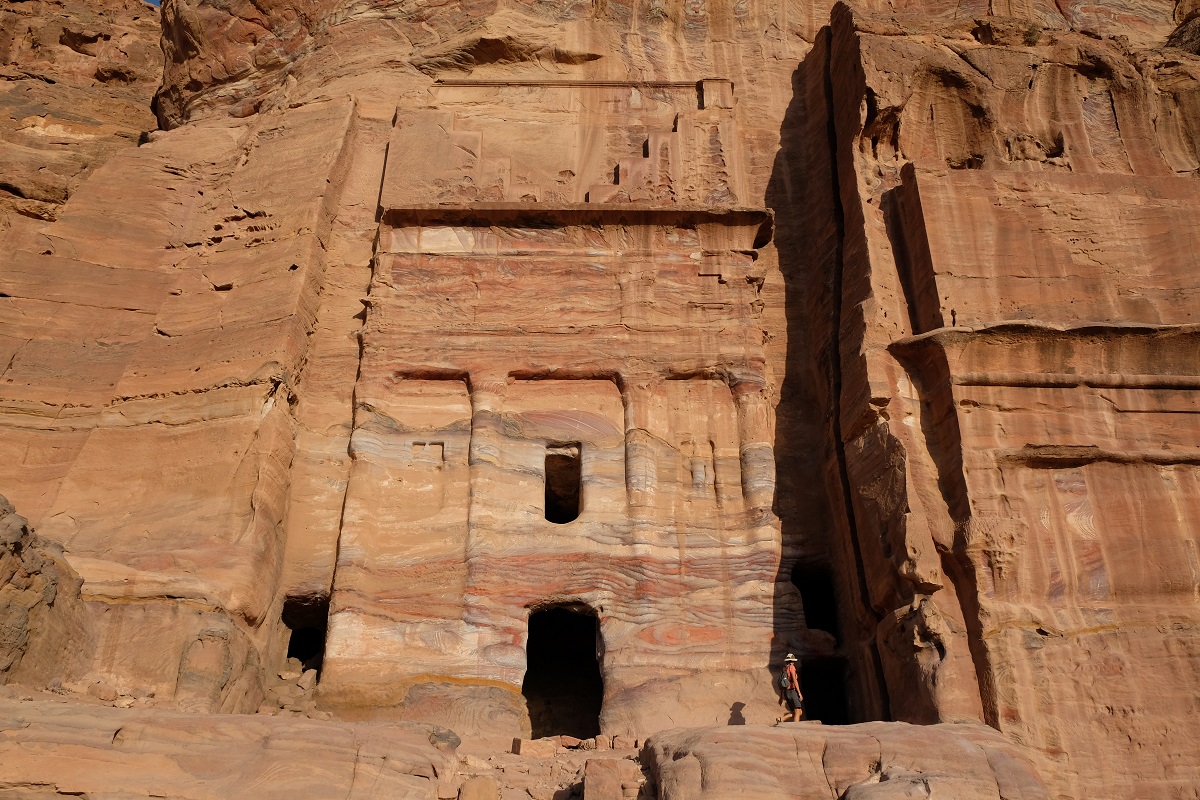

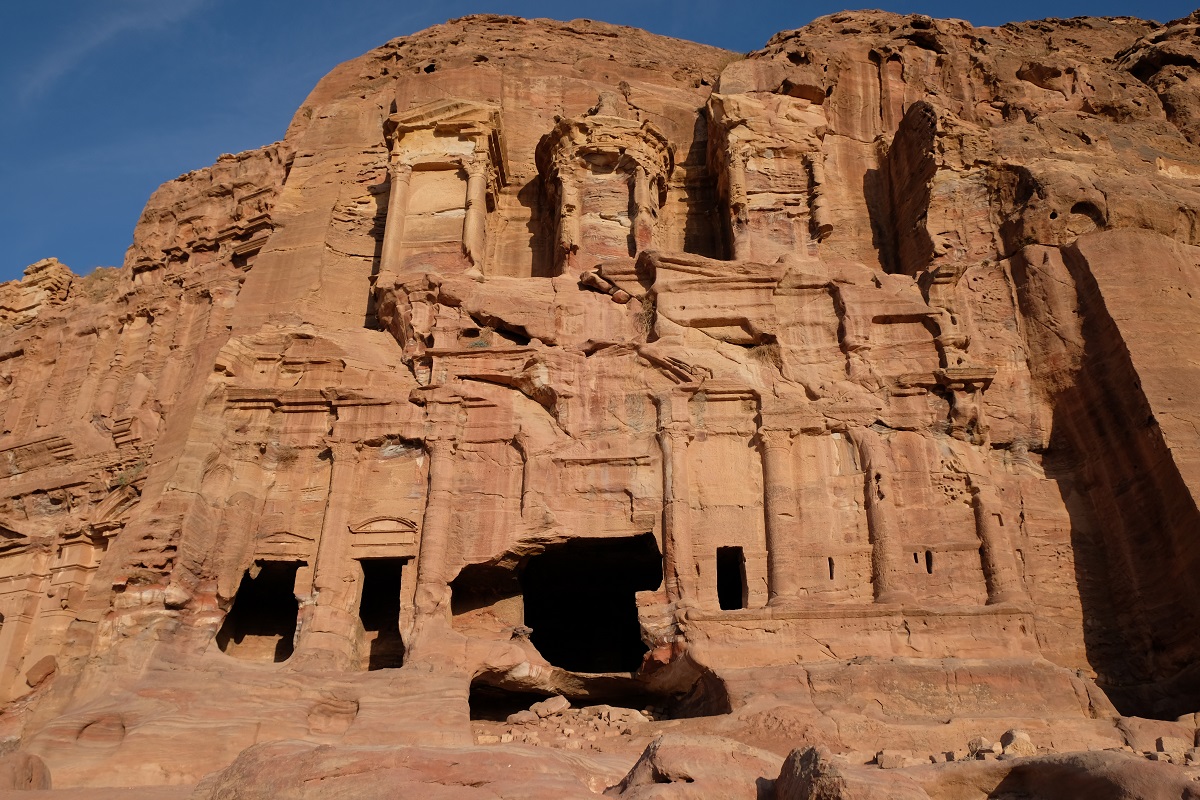






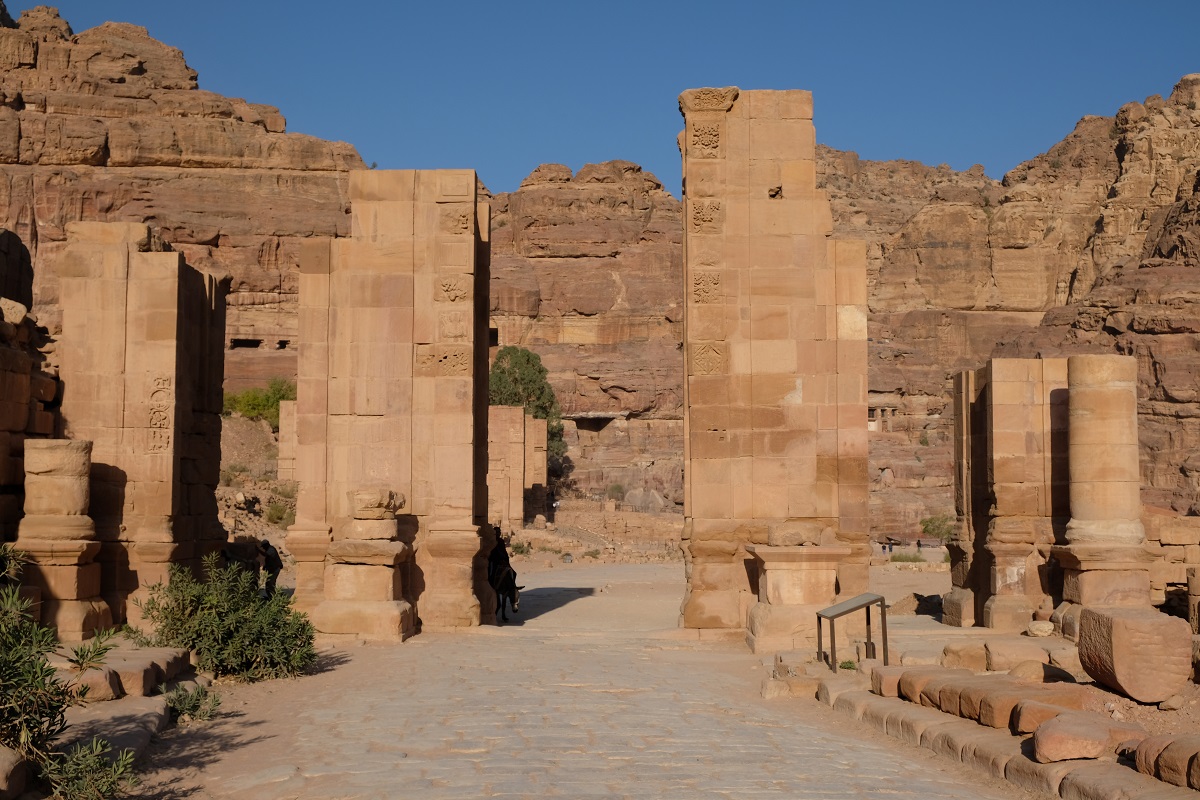

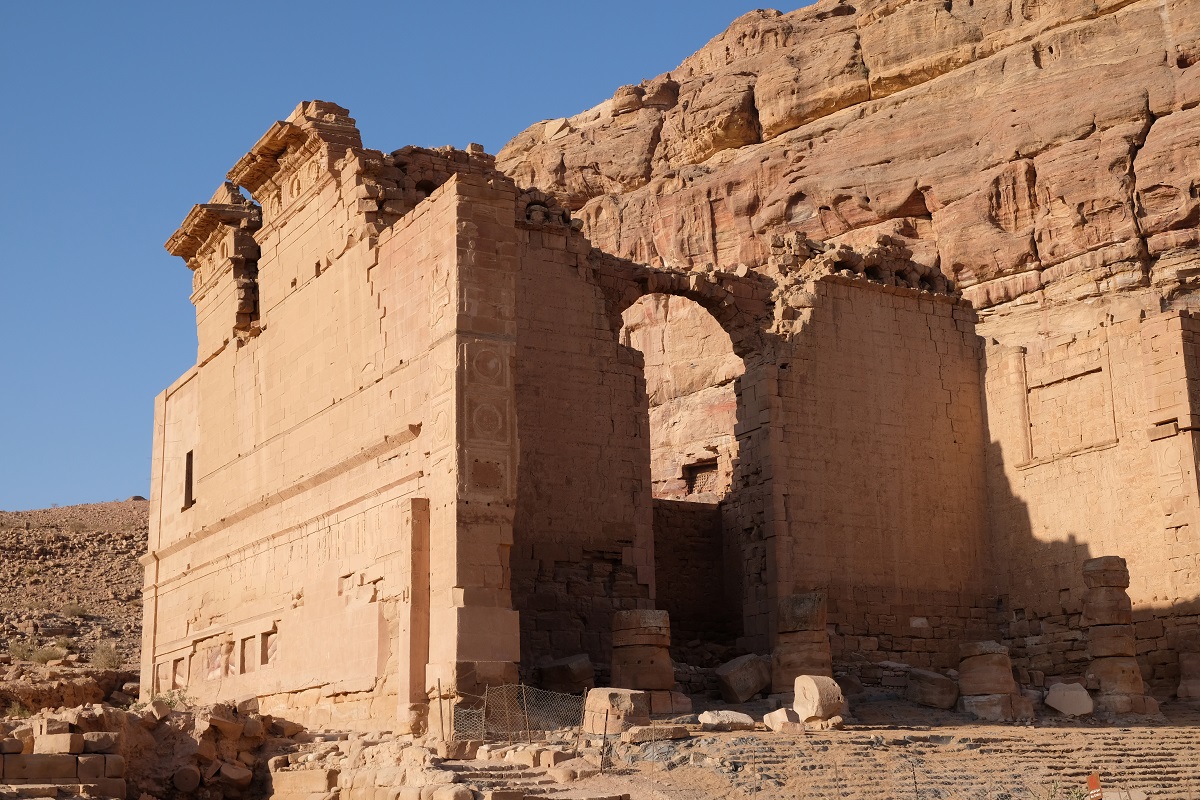
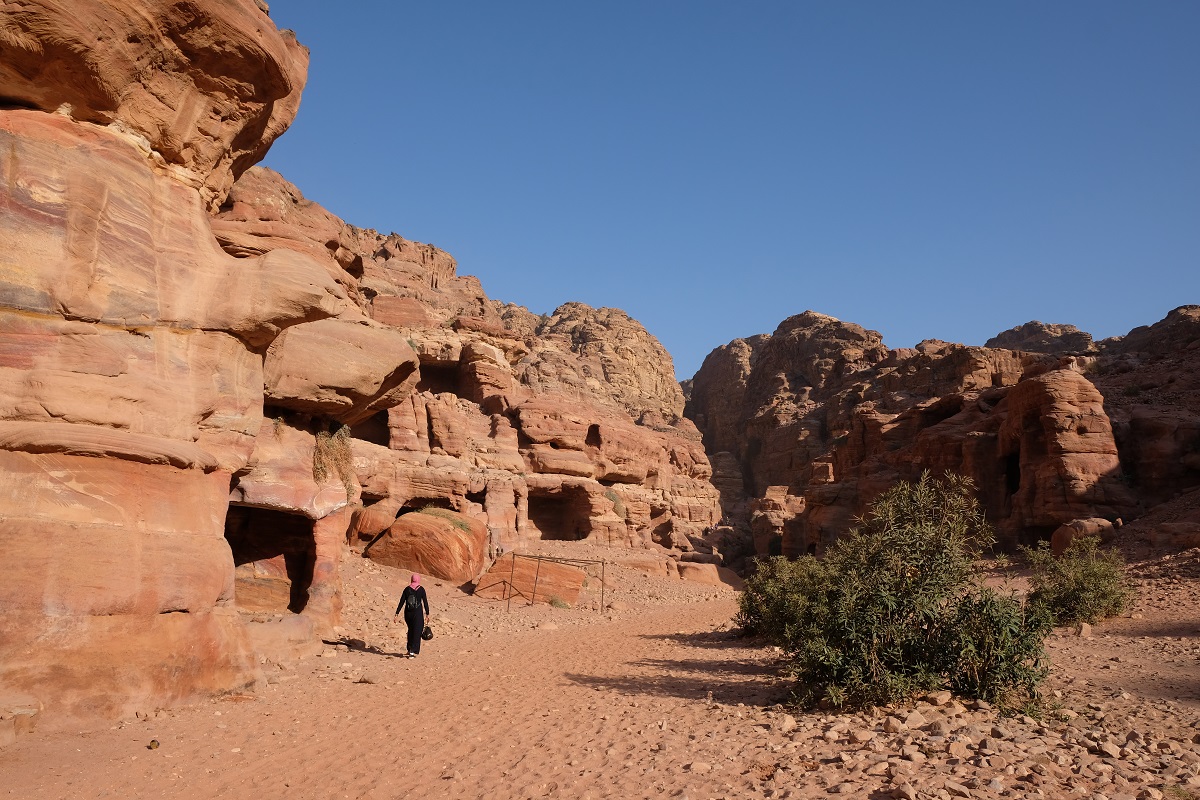



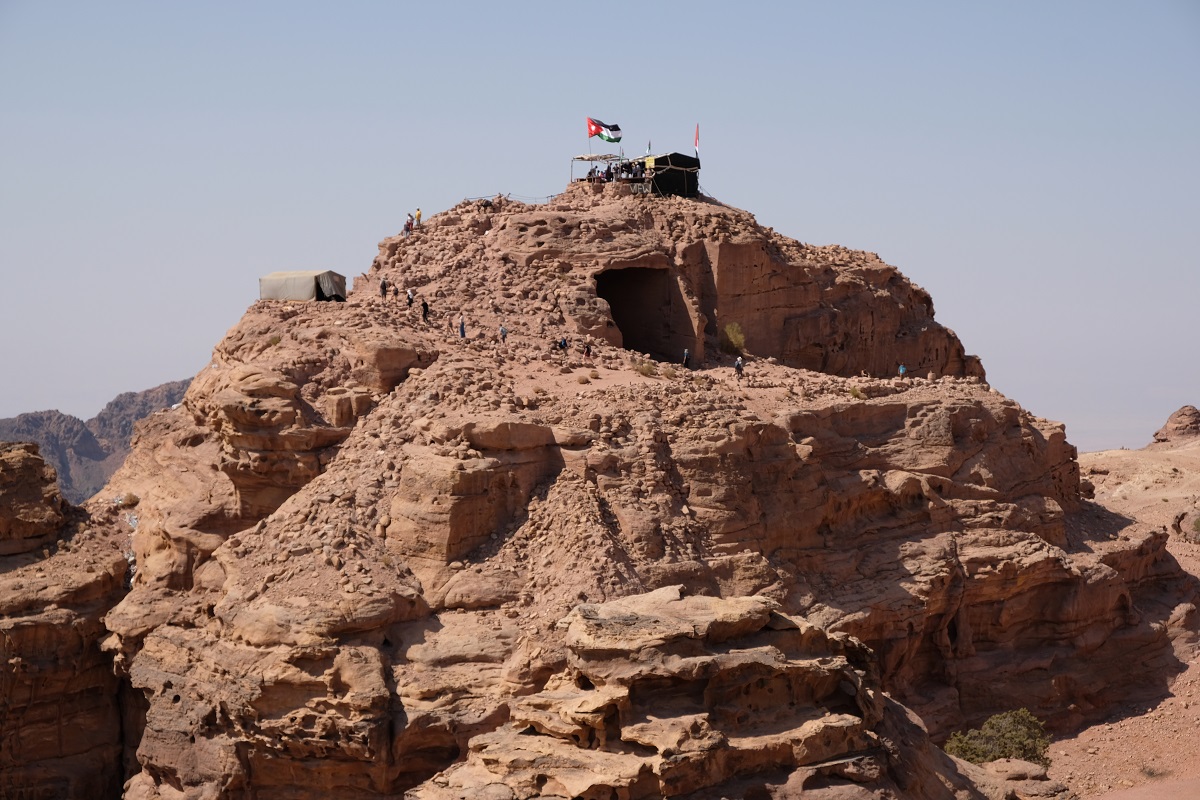





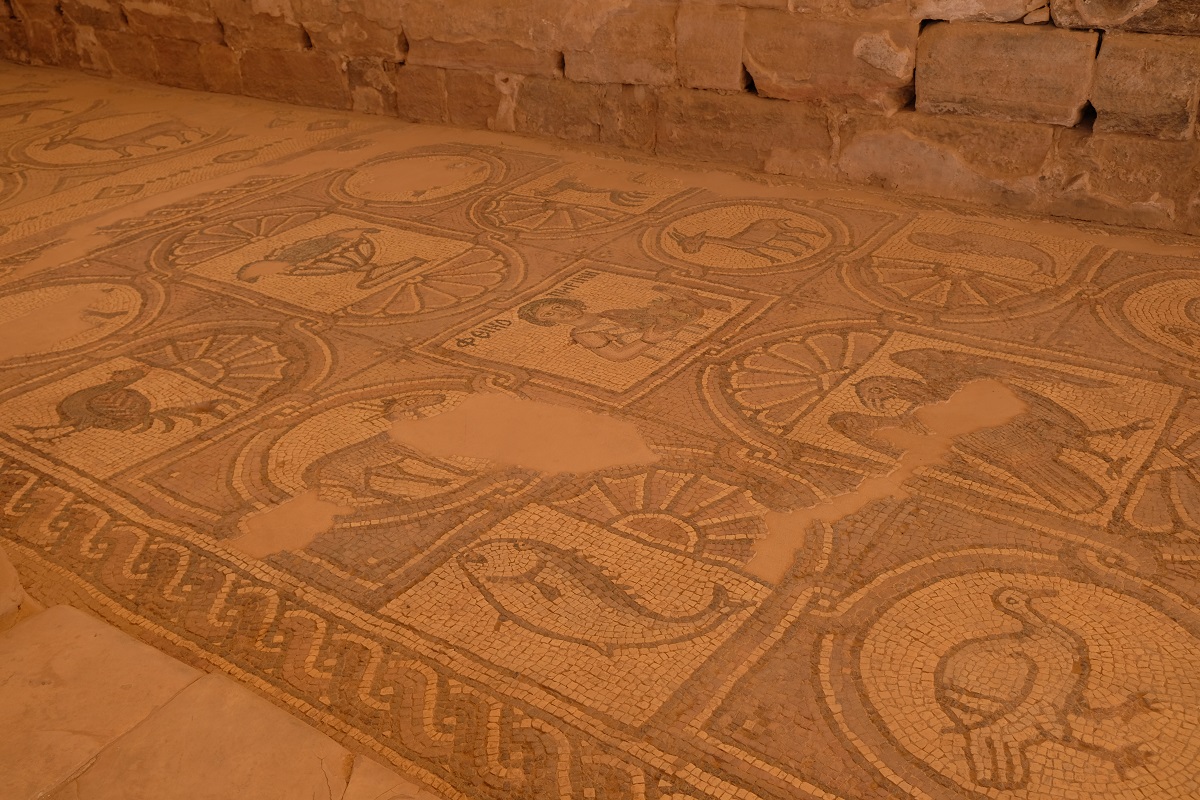

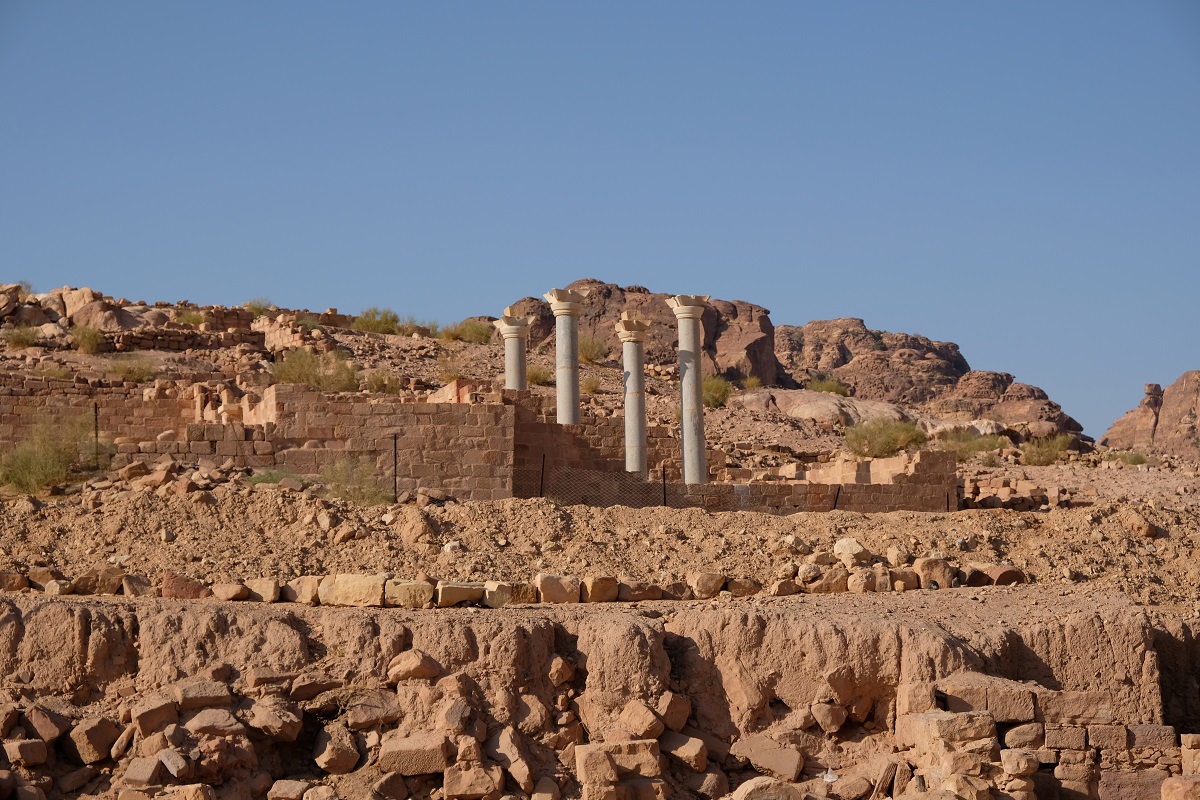

Petra, seems to be the most amazing serene place to visit, thank you for sharing with all your images and so much education about the history.
LikeLiked by 1 person
The world is filled with so many amazing historical sites, but I’m quite confident to say that Petra must be among the most incredible of them. You’re welcome, Cornelia. Thank you for reading!
LikeLiked by 1 person
Wow amazing. I love the mosaic tiles, I wonder who built these and the people who once roam these buildings. So beautiful!
LikeLiked by 1 person
The churches (including the mosaic tiles) were the creations of the Byzantines who ruled Petra long after the fall of the Nabatean empire. Wouldn’t it be great if we could go back in time to see how this magnificent city was like during its heyday? Thanks for reading, Mireya!
LikeLike
Awesome photos!
LikeLiked by 1 person
Thanks Anna! You know the kind of heat one has to deal with to get such photos in this barren yet magical place.
LikeLiked by 1 person
Oh yeh, I just wrote up my experience in little Petra….. Bought back memories of trudging through the heat cursing the “the short little walk” that ended up being 15 minutes of pure hell. Lol
LikeLiked by 1 person
Another fascinating post. Thanks!
LikeLiked by 1 person
Much appreciated, John and Susan!
LikeLike
I don’t know what I could say that hasn’t already been said – so thanks for your photos and history of this magnificent place!
LikeLiked by 1 person
You’re very welcome, Marilyn. Petra is indeed a place that can only be described with superlatives.
LikeLike
It’s such an amazing place! I enjoyed this deeper excursion into the history. And wonderful photos. It’s certainly one of the most spectacular places I’ve visited. Truly awe-inspiring.
Alison
LikeLiked by 1 person
Thanks Alison. If Jordan were geographically closer to Indonesia, I would have gone back to Petra in a heartbeat. There are just so many things to see in this ancient city.
LikeLiked by 1 person
Your photo of the Monastery with the single tiny person illustrates the larger than life scale of the place. Unless you’ve been, it is hard to appreciate how massive the buildings are. Thanks for giving us this historical account and taking us with you.
LikeLiked by 1 person
I knew I had to take at least a photo like that to give an illustration of this structure’s massive scale, because photos can be deceiving. Thanks Jeff!
LikeLike
Wow I love to be there! 🙂
LikeLiked by 1 person
Hopefully one day you’ll get the chance to go to Petra. It’s an amazing place!
LikeLike
Ah, this post brings back so many happy memories, Bama. Thank you for reminding me.
LikeLiked by 1 person
You’re very welcome, Jolandi. What a magical place Petra really is! I’m not surprised at all that you had a lot of great memories from your trip to this part of Jordan.
LikeLiked by 1 person
It’s funny, that climb up to the Monastery didn’t seem very difficult or very long at the time – I guess the key was staying hydrated and resting in the shade whenever needed. But I really struggled during the first 90 minutes or so on our recent Lantau hike. Perhaps my level of fitness has gone way down since our trip to Jordan.
I can see why you split our experience of Petra into two posts; there are just too many gorgeous photos to share and incorporating all the historical details might make things a little overwhelming. I’m so glad we budgeted three days there so we could take things at a much slower pace. The playful cats at the little snack stall facing the Monastery were a real bonus!
LikeLiked by 1 person
Maybe by the time we were in Petra, we were already acclimatized to Jordan’s heat and dry weather. While in Hong Kong your body was probably a bit shocked by the sudden physical activity at such altitude after getting used to going everywhere by public transport.
I took thousands of photos in Petra (I bet you took more than I did), so I wanted to make sure that I publish the photos of all those places we went to in this ancient city without having to put all of them in one post. Three days was just about the right amount of time, which made me cringe when some people only have enough time to go as far as the Treasury. It’s like you take a ship to visit New York City, then you see the Statue of Liberty, and you leave afterward.
LikeLiked by 1 person
I can’t get over the scale of this place. The way the Monastery has been carved into those imposing cliffs is truly magnificent. I particularly like your photos from a distance that show off the grandeur.
LikeLiked by 1 person
Despite the images of the Monastery I had seen on the internet, standing there right in front of it was truly a humbling experience. It’s mind-boggling to imagine how the Nabateans built this magnificent structure in this most improbable terrain.
LikeLike
Pingback: Petra the Magnificent – Part 2 — What an Amazing World! – Sarah's Attic Of Treasures